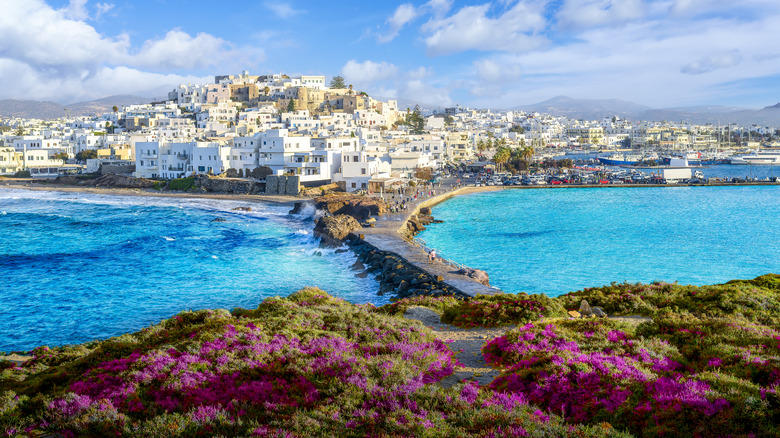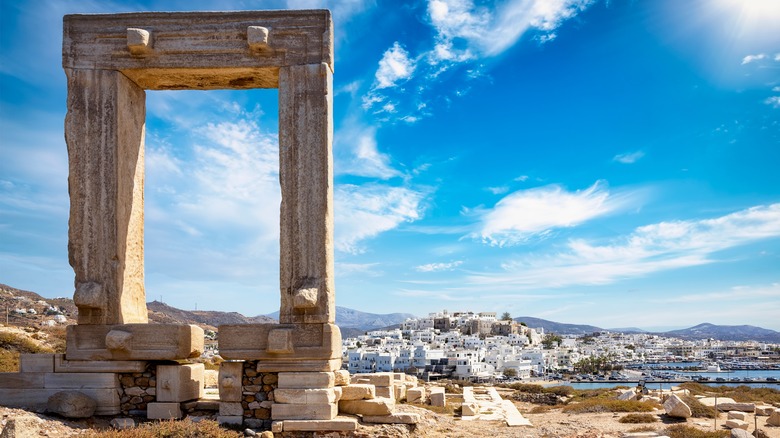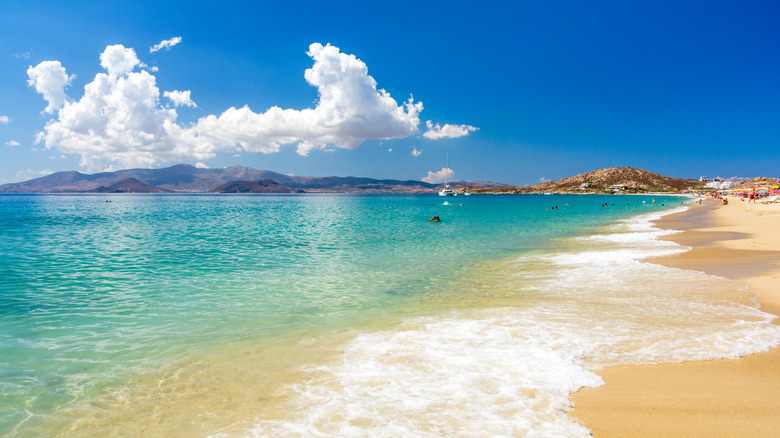A Quintessential Greek Getaway Without Big Crowds Awaits At This Often Overlooked Island
Greek islands number into the thousands and boast charming villages, ancient ruins, and some of the most spectacular beaches on planet Earth. So how do you decide which ones to visit if you can't devote your life to island hopping? Instead of following the masses to the busier islands, consider a hidden gem like Naxos, which has the same stunning scenery as the other islands but with fewer tourists and lower price tags. Imagine strolling down an endless stretch of golden sand, gazing out at the surreal turquoise waters, and not having to share this experience with hordes of others.
Nestled beside another underrated Greek island, Paros, in the middle of the Aegean Sea, Naxos is the biggest island in the Cyclades group in terms of land mass and has a full-time population of around 20,000. The ancient Greeks believed that Zeus, the father of all the gods, was raised in a cave on the tallest mountain of the island, which they named Mount Zas in his honor. In the rain shadow of this sacred mountain, agriculture has thrived, giving rise to Naxos' world-renowned culinary traditions. These even caught the attention of Anthony Bourdain, who filmed an episode of "Parts Unknown" here in 2015. In this episode, he delights in local dishes like stuffed peppers, slow-roasted rooster, mashed fava, and grilled grouper soaked in fresh lemon.
Culture and ancient history
Beyond the exquisite cuisine, there are many cultural experiences to be had on Naxos. Wander the streets of Chora, the island's capital, considered one of the loveliest towns in the Cyclades. Its winding streets are lined with beautifully designed houses and buildings, which glow an otherworldly white in the Mediterranean sunshine. An impressive castle atop the town's main hill exhibits Venetian architectural influences, recalling the island's interesting past. Naxos was under Venetian rule from 1207 to 1537, but its history goes back much further than that, the island having been settled around 4,000 B.C.
To appreciate the island's ancient history, walk back in time to the Portara, an enormous and mysterious stone door that leads to ... nowhere. The door is the only remaining structure of what was intended to be a temple to Apollo, which was begun around 520 B.C. but was never finished. The Portara sits on a small island, Palatia, connected to the town by a narrow causeway. Walk across this strip of land to get a close-up view of Portara and to contemplate the birthplace of yet another Greek legend. Palatia is supposedly where the hero Theseus heartlessly abandoned Princess Ariadne after she helped him slay a mythical monster, the ferocious Minotaur. Ariadne bounced back, though, and eventually rode into the sunset with the Greek god of wine, Dionysus. This is one Greek tragedy with a happy ending.
Naxos' incredible beaches and nature
No description would do Naxos justice without mention of the sublime beauty of its coastline and beaches. South of Chora is a string of postcard-worthy beaches that seem to go on for days. First, there's Agios Giorgos, a popular spot for windsurfing. Next, there's Agios Prokopios, one of Naxos' most beautiful beaches, with crystal-clear water and golden sand. Further down is Plaka, the longest stretch of sand on the island, at around 2.5 miles, and the beaches continue from there. As a general rule, the farther you get from the town of Chora, the more rustic the beaches and the fewer the amenities (e.g., beach chairs, bathrooms, cafes, and bars). This isn't necessarily a bad thing, if solitude is what you're after.
Many visitors to Chora focus their attention on the beaches, but a whole world exists offshore for those willing to dip beneath the ocean's surface. Naxos is actually highly regarded as a Mediterranean scuba diving destination, offering opportunities to see diverse marine life and explore reefs, caves, and wrecks. You might be tempted to spend most of your time around the island's alluring waters, but its interior has much to offer, too. Waiting to be discovered are charming whitewashed villages, awe-inspiring places of worship including hilltop monasteries and frescoed Byzantine churches, more ancient ruins, and the highest mountain in the Cyclades, the earlier-mentioned Mount Zas, which towers over the island at an altitude of 3,294 feet.


